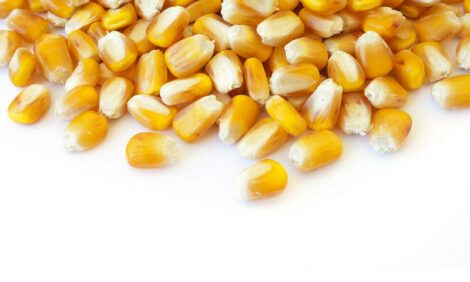



Canada Livestock and Products Semi-Annual - February 2006
By USDA, Foreign Agricultural Service - This article provides the pork industry data from the USDA FAS Livestock and Products Semi-Annual 2006 report for Canada. A link to the full report is also provided. The full report includes all the tabular data which we have omitted from this article.Report Highlights
This report updates developments in the Canadian cattle and hog sectors with regard to livestock inventories, meat and livestock trade, and other factors affecting beef and pork production in Canada during 2006.
Important Note
Readers are advised that the inventory numbers for 2005 and 2006 in this report are post estimates made just prior to the Statistics Canada information release of livestock surveys due mid-February 2006. Consequently, the estimates in this report are subject to revision when the Statistics Canada livestock inventory numbers are officially released.
Executive Summary
The Canadian cattle herd is expected to stabilize during 2006, in contrast to the dramatic rise in cattle numbers since Canada’s first case of BSE was discovered in May 2003.
The outlook for Canadian beef and veal production in 2006 is for a year-to-year increase of about 1.4% taking total beef and veal output close to 1.5 million metric tons.
The U.S. border re-opened for imports of Canadian cattle under 30 months in July 2005, but the number exported since that time is below the pre-BSE rate due to a combination of factors that includes increased Canadian slaughter capacity.
Canada’s confirmation of its fourth case of BSE in January 2006 is not expected to result in the closure of the major export markets that re-opened to Canadian beef over the past two years.
Canada’s hog industry in 2006 is expected to be characterized by increased live hog exports to the United States, higher pork exports to third country destinations and strong demand for imports of certain U.S. pork cuts.
With continued increases in Canadian pork exports, now over the 1.0 million metric ton level, the Canadian domestic market plays a smaller role in influencing Canadian pork production swings.
Hog Inventory
Present indicators suggest that Canadian swine breeding herd inventory may show a modest, albeit temporary, decline at the beginning of 2006 when the Statistics Canada hog survey data are released later this month. However, farrowing intentions may increase as the year progresses with the total pig crop for 2006 totaling close to last year’s mark. Live hog exports to the United States are forecast to increase by about 6% to 8.7 million head from an estimated 8.2 million head in 2005 (i.e., utilizing trade data through Novemb er 2005).
Pork Production Outlook
A modest production increase of about 1% is the current outlook for Canadian pork production in 2006. The sow inventory at the beginning of 2006 is expected to show a small decline when the official numbers are released by Statistics Canada in mid-February 2006. Total pig exports to the United States in 2006 are forecast to climb near 8.7 million head, up 6.0% from the estimated 8.2 million head during 2005. Combined with ever increasing Canadian pork exports, now over the 1.0 million metric ton level, the Canadian domestic market plays a smaller role in influencing Canadian pork production swings.
Pork Trade
Canadian pork imports in 2006 are forecast to register another year-to-year sharp increase
reflecting increased imports from the United States and from Denmark. In the January-
November period of 2005, Canadian imports of pork from the United States increased almost
30% above the year earlier level. The development is related to increased imports of certain
cuts from the United States as Canadian pork processors utilize domestic production to fill
overseas orders, mostly Japan.
Canadian pork exports during 2006 are forecast to increase about 3% from the 2005 level.
Increased exports to Japan, Mexico and Russia are expected to provide most of the impetus
for higher exports. Canadian pork exports to the United States in 2006 are forecast to be
lower.
Policy Updates: Corn Trade Case; Implications for Livestock
On December 15, 2005, the Canada Border Services Agency (CBSA) announced preliminary
countervailing and anti-dumping duties on U.S. corn imports into Canada. The CBSA’s
preliminary ruling was in agreement with an earlier November 15, 2005 preliminary ruling by
the Canadian International Trade Tribunal (CITT), which found that U.S. unprocessed grain
imports had caused injury to the Canadian corn industry.
The consequences of the duties
are expected to impact several sectors within Canada’s agricultural industry. Any price
increase of corn will have a negative impact on Canada’s livestock sector, possibly resulting
in increased exports of feeder pig and possibly feeder cattle in order to take advantage of
cheaper feeding costs in the United States, as higher feeding costs will make both industries
less competitive compared to U.S. producers.
In addition, the duties may result in increased
movements of feed wheat and feed barley from western Canada into eastern Canada,
replacing the more expensive corn for livestock feed. Final decisions from both CBSA and
CITT are pending and are due out on March 15, 2006 and April 16, 2006, respectively. For
more analysis, see CA5085.
Further Information
To read the full report please click here (PDF format)
List of Articles in this series
To view our complete list of 2006 Livestock and Products Semi-Annual reports, please click hereSource: USDA, Foreign Agricultural Service - Annual Livestock and Products Report - February 2006








